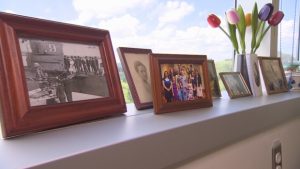
Shooting his own video He’s taught himself to shoot 360-degree video and to edit other video so that it gives […]
Shooting his own video
He’s taught himself to shoot 360-degree video and to edit other video so that it gives viewers an immersive experience. Parker doesn’t just want to show someone a video of the Great Wall of China; he wants them to feel like they’re getting on a plane, riding a taxi to the hotel, wandering the hot and crowded markets, before seeing the final wonder.
“I’m not just dumping a headset on them,” he said. “I’m actually sort of progressing it so they get the feeling that they’re doing a trip or doing something that’s special.
“How can we virtually start to cross items off [the patient’s] bucket list?”

To Parker’s knowledge his pilot project is the only of his kind in Toronto.
There’s limited data about the efficacy of virtual reality as therapy, but both he and Dr. Leah Steinberg — the palliative care physician who has supported the project — hope to change that.
They’ve already cleared several hurdles simply in starting the program. For example, they’ve ensured that the headset can be sterilized so that it doesn’t bring in any bacteria to vulnerable patients.
It’s not a typical medical tool, but the escape of virtual reality can help patients cope after learning they have a terminal condition, Steinberg said.
